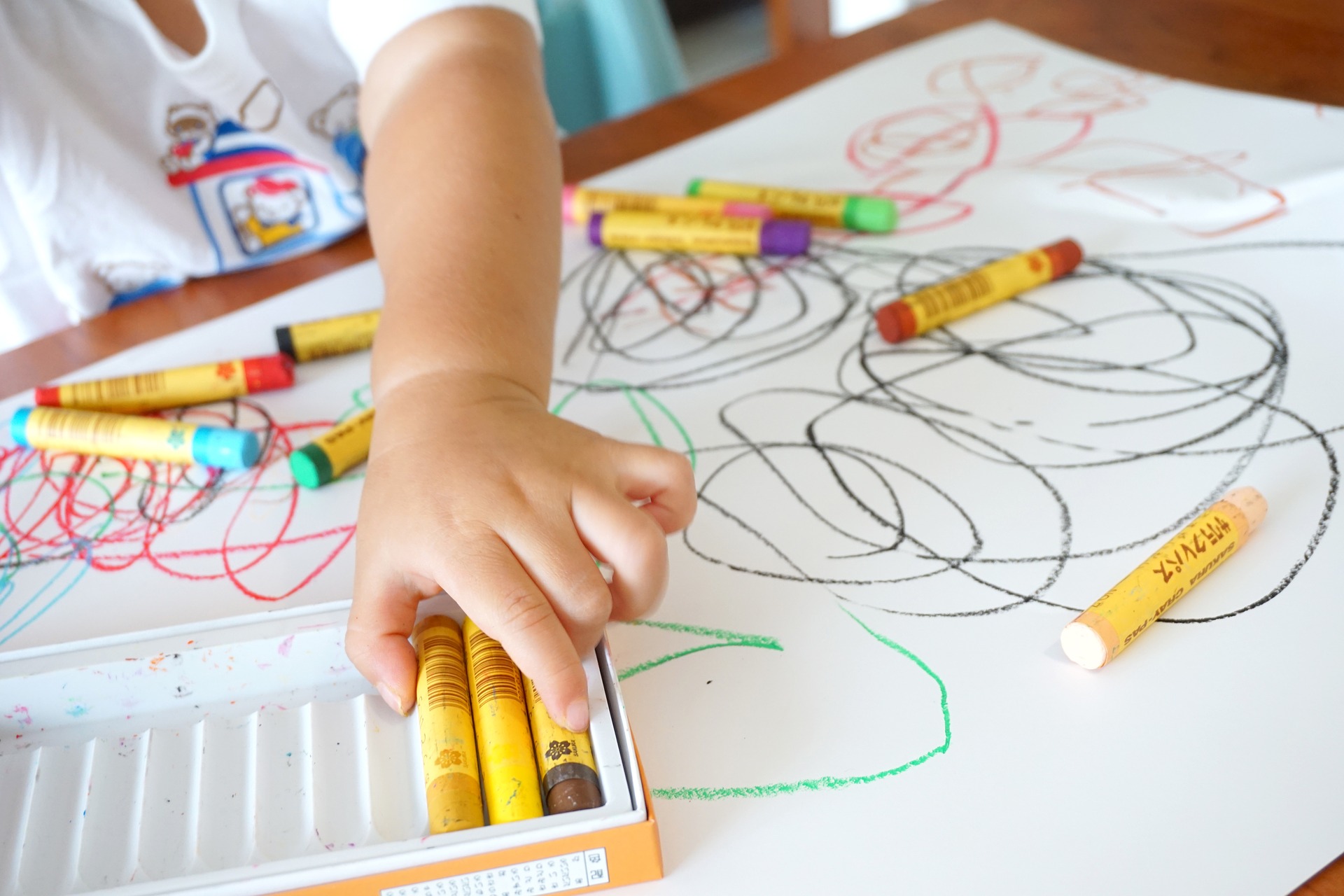By Diana Fitts, Occupational Therapist at The Sensory Toolbox

Alright, it’s time to buy your child those rainbow gel pens they’ve been begging you for. No, I’m not calling for a revival of that fabulous 90’s trend. Instead, I want you to tell your kids to doodle their hearts out. Circles, squares, unicorns, monkeys, spaceships; let their imaginations be free.
As it turns out, research points to the fact that doodling helps with concentration. Psychologist Jackie Andrade ran a study in which she found that people who doodled while listening to boring information remembered about 29% more than those who didn’t doodle. That’s a big difference from just a pen and paper!
What can we gain from all of this? Well, there’s no doubt you would benefit from bringing a notebook with you to any boring PTA meetings. But, while you’re at the store, pick one up for your kid as well.
In my article about the science behind fidgets, I talk about how fidgeting engages the brain enough to prevent boredom and daydreaming. Without the mental wheels turning, fidgeting allows for better focus on the task at hand. Doodling works in the same way. In fact, doodling is simply a fidget by a different name.
Doodling engages the brain without overwhelming it to the point of needing to devote a lot of attention to it. If you’ve ever doodled while watching a movie or listening to a podcast or audiobook, you may have found yourself getting lost in the story. Time and space became unimportant as you focus solely on your work. This mental state is called “flow.”
Flow is touted as the best mental state for productivity. We’ve all experienced flow. It’s that amazing state where time falls away, we get caught up in what we’re doing, and work comes easily and naturally. To learn more about the science behind it and how to harness it on a regular basis, this book is your guide.
When your kid is doodling in class and experiences flow, enough of their brain is entertained by the doodling that they can tolerate listening to their teacher. This isn’t to say that the science is perfect. There will be times when the doodling is overwhelmingly entertaining to the point that your child’s brain is only thinking about elaborate stories to match their drawings. Overall though, doodling and fidgets can be the difference between your child remembering any of the history lesson or not.
If fidgets and doodling are both effective for flow and concentration, why choose one over the other? Deciding between fidgets and doodling has to do with what your child needs. If your child has more artistic tendencies, a pad of paper and a set of markers will likely help them sit through math class better than a chair foot bouncer would. But, if your child is a sensory seeker and craves movement, a wobble seat cushion may be best. Learn what your child likes and experiment from there.
Another factor to consider when choosing between fidgets and doodling is your child’s teacher. Doodling can be less disruptive than other fidget options, often making it the teacher’s preference. Even if your child’s teacher doesn’t have a preference one way or the other, be sure to touch base with your child’s teacher prior to telling your child to let loose with the gel pens. While teachers are becoming more receptive to the need of children to doodle in class, be sure they are on board before you give your child the go ahead.
Also be sure to check in with your child’s occupational therapist. An occupational therapist can not only help you decide if doodling would be effective for your child, but also help you implement additional strategies for staying focused.
As I frequently say, it’s often the simple solutions that make the biggest impact. For your child, doodling may be the difference between making it through a day of school and a meltdown. As always, experiment with different options as you build your sensory toolbox.

